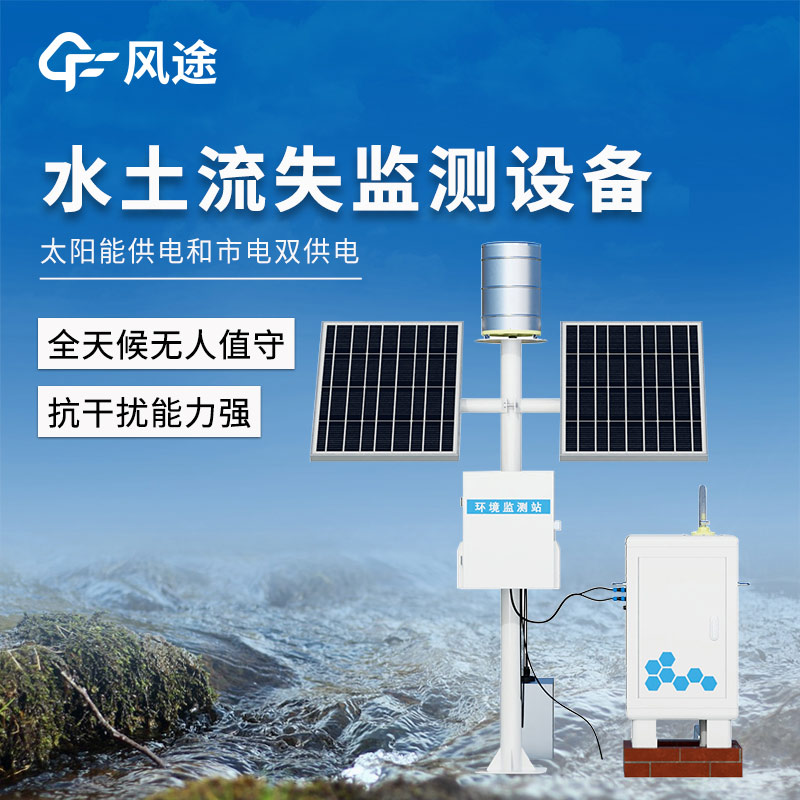Tianqiong Sensor IOT Technology Co., Ltd
Sales Manager:Ms. Emily Wang
Cel,Whatsapp,Wechat:+86 15898932201
Email:info@fengtutec.com
Add:No. 155 Optoelectronic Industry Accelerator, Gaoxin District, Weifang, Shandong, China

Sales Manager:Ms. Emily Wang
Cel,Whatsapp,Wechat:+86 15898932201
Email:info@fengtutec.com
Add:No. 155 Optoelectronic Industry Accelerator, Gaoxin District, Weifang, Shandong, China
time:2025-11-14 09:08:48 source:Weather Station viewed:6 time
In the monitoring of soil erosion in runoff plots and small watersheds, the traditional manual measurement model has long faced numerous bottlenecks. Staff need to carry various instruments to and from monitoring points, not only to conduct flow observations in complex terrain but also to manually collect sediment samples for laboratory analysis. The entire process involves massive workloads and is time-consuming and labor-intensive. The inefficiency of manual measurement becomes particularly pronounced during the flood season, where rapid changes in runoff caused by short-duration heavy rainfall often make it difficult to record key data points. Meanwhile, labor costs for manual monitoring rise year by year, and data accuracy is susceptible to subjective factors such as the observer's experience and adherence to operating standards, leading to significant errors. This makes it difficult to meet the modern requirements for precision and timeliness in soil erosion monitoring. Against this backdrop, after years of technological research and extensive field testing, automatic soil erosion monitoring systems have successfully innovated beyond traditional models, with the FT-JL1 Automatic Monitoring Instrument for Runoff Sediment being a representative product.
The FT-JL1 is a comprehensive and intelligent solution specifically designed for soil erosion monitoring. It completely eliminates reliance on manual operation, achieving full-process automation from data collection to transmission. Once deployed, the equipment can automatically initiate operations based on preset monitoring frequencies, requiring no on-site personnel presence. This greatly reduces the labor intensity for monitoring personnel and is particularly suitable for remote or hard-to-access monitoring areas.
The system consists of a main data acquisition control unit, a sediment concentration measurement sensor, and an open channel flow sensor, forming a complete monitoring chain.
Among these, the open channel flow sensor component can automatically measure surface flow. Through the central control computer software and parameter settings, it calculates the surface runoff flow rate over time, obtaining real-time changes in runoff flow.
The sediment concentration measurement sensor, based on rainfall and runoff characteristics, measures the sediment concentration of the runoff in real-time at the sediment measurement port within the vertical distribution of runoff.
Surface water enters the open channel or Parshall flume through the diversion channel and passes through the open channel flow meter to obtain instantaneous runoff data and calculate the total runoff volume per unit time.
Subsequently, the water distribution pipe collects the surface water and delivers it to the main tank. When the volume of surface water in the main tank is sufficient for testing, the system automatically starts and transfers the water to the sample chamber for detection.
The sensor sends the collected data to the processor. After processing, the sediment content is obtained. Once the data is acquired, the system discharges the internal sample through the drain pipe, preparing for the next sampling cycle.
The entire processing process outputs data to external devices via RS-485 communication, enabling remote data transmission.
Currently, the FT-JL1 system is widely used in fields such as soil and water conservation plan verification and soil erosion monitoring for development and construction projects. By collecting, analyzing, and transmitting data in real-time, the system provides scientific data for water resources, environmental protection, land resources, and agricultural departments, facilitating the transformation of soil and water conservation work from traditional manual methods to modern intelligent monitoring.

In the field of wind power generation, wind measurement is of great significance. Traditional wind - measuring methods, such as wind towers or radars, are effective but have limitations. Wind towers can only measure at fixed locations, while radar equipment is expensive and bulky, making it difficul...
EL (Electroluminescence) detection, a non-destructive testing method, works as follows: When a forward bias is applied to a photovoltaic (PV) module, electrons and holes diffuse to the P and N regions, respectively. The radiative recombination of charge carriers generates photons, resulting in the e...
Crop growth monitoring refers to the dynamic observation of crop seedling status, growth conditions and their changes, which is related to the adjustment of cultivation measures. The adoption of rapid and non-destructive monitoring methods can not only reflect the changes in crop yield (whether abun...
To measure water levels, a Radar Water Level Sensor is required, such as the YW-76 introduced today. Let's take an in-depth look at its advantages and working principle.1. High-frequency Technology Ensures Measurement AccuracyThe YW-76 horn-type Radar Water Level Sensor adopts Frequency Modulate...